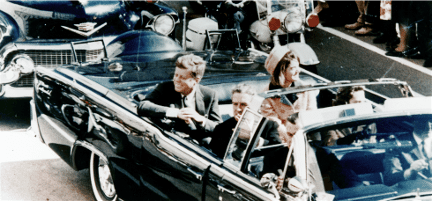

It really is true what they say – if you’re old enough, you’ll remember where you were when you heard President Kennedy was dead. I was onstage rehearsing a fifth-grade play when a teacher (a jovial Texan who seemed to know everything about the history of Dr. Pepper soda) came into the auditorium with the news. He and my own teacher seemed more fascinated than saddened about what had happened in Dallas, and we kids were just happy to suddenly be sent home early. Outside, yellow maple leaves covered the sidewalks, the fall air was tinged with a slight chill and, as it was a Friday, with the smell of burning papers from our school’s incinerator.
Today, of course, is the 50th anniversary of the assassination and this month has been all about JFK, especially on television, where Kennedy appears to have been rehabilitated as, once more, the man who was on the verge of changing the world.
» Read more about: If JFK Had Lived – He’d Be Very Old Today »
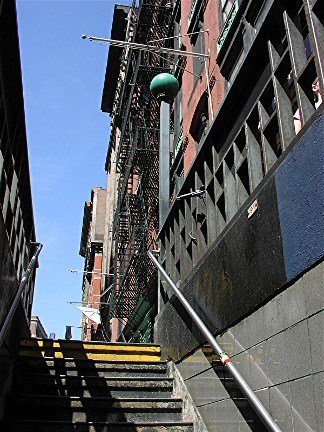

(for Sonia Nieto)
In Brooklyn, the mice were crazy
with courage, bony gray pickpockets
snatching crumbs from plates
at the table. The roaches
panicked in spirals on the floor,
or weaved down walls
for the sanctuary of cracked paint.
No heat, so the oven door drooped open
like an immigrant’s surprise.
Sonia’s mother was mute in English,
mouth chapped and coughing
without words to yell for heat.
But the neighbors spoke of Borofels:
Tell Borofels, and mice shrivel in traps,
roaches kick in poisoned heaps,
steam pipes bang so loud
that windows open in winter.
Sonia and her mother sailed
on a subway train rocking like a ship
desperate for light, then rose
into an untranslated territory
of Brooklyn. So Sonia translated:
“Where is Borofels?”
No one knew;

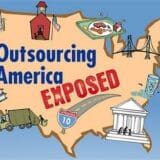
As Gary Cohn and Bill Raden point out in a recent Frying Pan News piece, it’s become the pastime of conservatives to skew debates over public employee pensions by singling out the comparatively high retirement benefits of “top-tier city and county executives,” while ignoring the typical pensions earned by the vast majority of government workers. This ploy is also used, naturally, in propaganda decrying the salaries of public sector employees while they are still actively working for states and cities.
The Center for Media and Democracy’s new project, Outsourcing America Exposed, has discovered that there is, in fact, a breed of “government worker” whose members receive sky-high, taxpayer-funded salaries. They are not teachers or librarians, however, but “CEOs whose corporations make billions by taking control of public services.”
Says CMD executive director Lisa Graves: “Taxpayers are being duped by corporate CEOs and Wall Street banks that are siphoning money out of our communities for huge salaries and bonus packages.”
Graves is referring to the gold-plated trough known as privatization,
» Read more about: How Public Taxes Became a CEO’s Personal Income »


Walmart’s 1.3 million workers won a big victory Monday when the National Labor Relations Board ruled that the retail giant had broken the law by firing and harassing employees who spoke out—and in some cases went on strike—to protest the company’s poverty pay and abusive labor practices.
The federal agency will prosecute Walmart’s illegal firings and disciplinary actions involving more than 117 workers, including those who went on strike last June as part of a growing movement of company employees. The ruling is likely to accelerate the burgeoning protest movement among Walmart employees, upset with low pay, stingy benefits, arbitrary work schedules and part-time jobs.
Over the past year, protests against the world’s largest private employer have escalated, led by OUR Walmart, a nationwide network of Walmart workers. Last fall, the group announced that it would hold rallies outside Walmart stores in dozens of cities on the day after Thanksgiving—the busiest shopping day of the year,
» Read more about: NLRB Sides With Walmart Workers in Major Ruling »
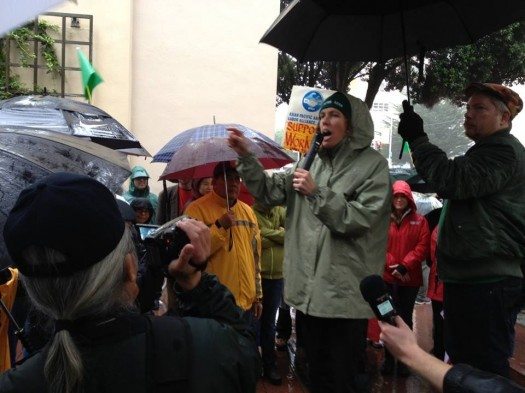
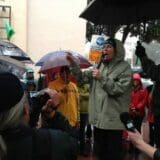
Yesterday, some 22,000 surgical and X-ray technicians, custodians, servers, cooks and other workers at nine University of California campuses and all of U.C.’s medical centers began a one-day unfair labor practice strike over what they say is intimidation and harassment of workers who took part in an earlier strike over patient safety in May.
AFSCME Local 3299 President Kathryn Lybarger said:
Our members have both the legal right and moral responsibility to stand up for the safety of the students and patients we serve. By attempting to silence workers, U.C. hasn’t just repeatedly broken the law—it has willfully endangered all who come to UC to learn, to heal and to build a better life for their families.
As it did in the May action, before today’s walkout began, Local 3299 took measures to ensure that patient care needs would be met, including keeping many key workers on the job and forming a Patient Protection Task Force to ensure that unforeseen emergency medical needs at U.C.
» Read more about: U.C. Health Care Employees Walk the Line »


 Better bring some identification — and not just any identification, official though it may be — if you plan to vote in Republican-controlled states. However, if you contribute tens of millions of dollars to sway an election on Republicans’ behalf, the party will fight to keep your identity a secret.
Better bring some identification — and not just any identification, official though it may be — if you plan to vote in Republican-controlled states. However, if you contribute tens of millions of dollars to sway an election on Republicans’ behalf, the party will fight to keep your identity a secret.
Consider, for instance, what happened to some attempting to participate in this month’s elections in Texas. The New York Times reported that “Judge Sandra Watts was stopped while trying to vote because the name on her photo ID, the same one she had used for voter registration and identification of 52 years, did not exactly match her name in the official voter rolls.” Both Democratic state Sen. Wendy Davis and Republican Attorney General Greg Abbott — the front-runners in next year’s gubernatorial contest — encountered the same obstacle. As did Jim Wright, the 90-year-old former speaker of the U.S.

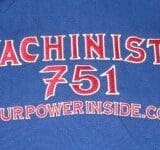
 In a remarkable act of courage and solidarity with the next generation, last week Boeing workers in Seattle soundly rejected corporate extortion, by voting down a contract which traded job guarantees for concessions that would severely erode the pay and benefits of younger workers. In doing so, the members of the Machinists are risking their jobs to save an America built on the middle class.
In a remarkable act of courage and solidarity with the next generation, last week Boeing workers in Seattle soundly rejected corporate extortion, by voting down a contract which traded job guarantees for concessions that would severely erode the pay and benefits of younger workers. In doing so, the members of the Machinists are risking their jobs to save an America built on the middle class.
The dramatic fight of fast-food workers for a minimal living wage, risking their jobs every time they take a day off to demonstrate, is one end of a corporate economy based on low wages, no benefits and no unions. That corporate strategy, aimed at maximizing profits, is destroying America’s middle class, wrecking the engine that powered the U.S. economy.
On the other end of the middle class are workers like Boeing’s, who have fought together through their union for the good pay, pensions,
» Read more about: Machinists Say No to Cutting Next Generation’s Benefits »
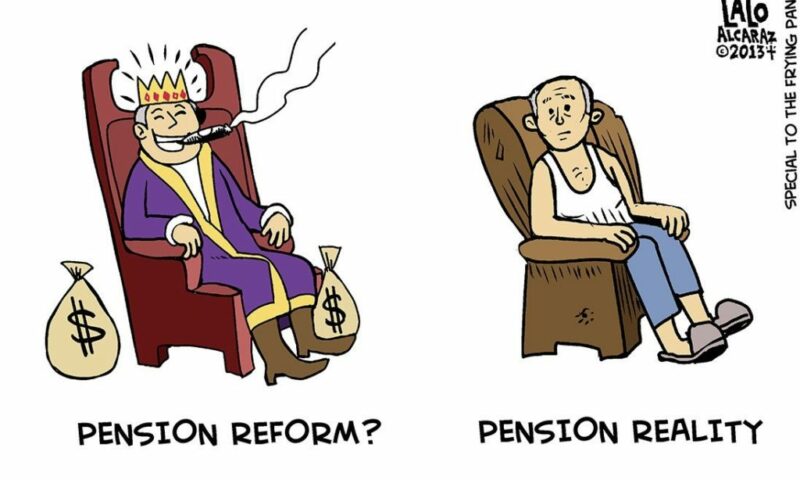
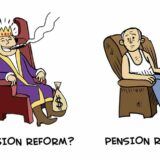
It’s official: America has entered a retirement crisis. Or, as Forbes understatedly put it, “the greatest retirement crisis in the history of the world.”
And, while the causes are manifold — the demographic bulge of baby boomers leaving the fulltime workforce; greater worker longevity; the disastrous, 30-year shift from traditional defined benefit pensions to costly 401(k)-style plans — most experts agree that the national retirement implosion has gone critical, with an estimated 75 percent of Americans who are nearing retirement age having less than $27,000 in their retirement accounts.
Even John C. Bogle, the founder of the $2 trillion mutual fund and 401(k) behemoth Vanguard Group, recently admitted that the system of retirement plans that rely on 401(k)s is broken.
“[401(k)s were] designed as a thrift plan, and it doesn’t work as a retirement plan,” Bogle declared.
So it is with some irony that a Texas hedge fund billionaire/former Enron trader and a politically ambitious Northern California mayor have teamed up to cripple one of the few parts of the retirement story that still works — California’s public-sector pension system.
» Read more about: My Body Isn’t 40 Anymore: Three Faces of Retirement »
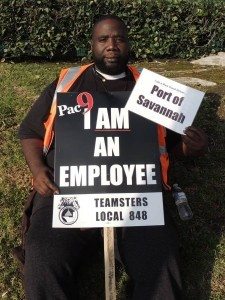
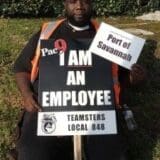
 This afternoon about 100 port drivers will return to their jobs after staging a 36-hour walkout. The unfair labor practices strike, which was supported by the International Brotherhood of Teamsters Local 848, was called to protest what drivers say is employer retaliation for trying to organize a union. The companies targeted in and around Carson were Green Fleet Systems, Pac 9 Transportation and American Logistics International. The drivers claim they’ve been intimidated and harassed for their organizing efforts – employer actions that are against U.S. labor law.
This afternoon about 100 port drivers will return to their jobs after staging a 36-hour walkout. The unfair labor practices strike, which was supported by the International Brotherhood of Teamsters Local 848, was called to protest what drivers say is employer retaliation for trying to organize a union. The companies targeted in and around Carson were Green Fleet Systems, Pac 9 Transportation and American Logistics International. The drivers claim they’ve been intimidated and harassed for their organizing efforts – employer actions that are against U.S. labor law.
In addition to the retaliation allegations lodged with the National Labor Relations Board, wage-theft charges have been filed with the state against Pac 9 for misclassifying its employee drivers as “independent contractors” – a ploy that has allegedly allowed the company to deduct its business expenses from the drivers’ salaries.
The striking port drivers did not walk the line alone – Teamsters from the Toll Group,
» Read more about: Port Truckers Strike to End This Afternoon »


Walmart just reported shrinking sales for a third straight quarter. What’s going on? Explained William S. Simon, the CEO of Walmart, referring to the company’s customers, “their income is going down while food costs are not. Gas and energy prices, while they’re abating, I think they’re still eating up a big piece of the customer’s budget.”
Walmart’s CEO gets it. Most of Walmart’s customers are still in the Great Recession, grappling with stagnant or declining pay. So, naturally, Walmart’s sales are dropping.
But what Walmart’s CEO doesn’t get is that a large portion of Walmart’s customers are lower-wage workers who are working at places like … Walmart. And Walmart, not incidentally, refuses to raise its median wage (including its army of part-timers) of $8.80 an hour.
Walmart isn’t your average mom-and-pop operation. It’s the largest employer in America. As such, it’s the trendsetter for millions of other employers of low-wage workers.